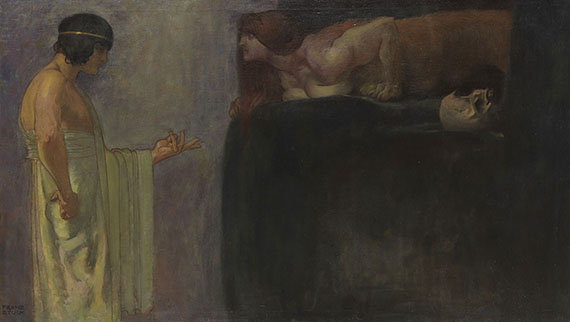Dictionary


Directoire
During the French Revolution, a Greek-inspired classical style entered art and fashion, constituting the transition from Louis-Seize era to the Consulate and Empire periods: Directoire. The period was named after the Directorium government, which ruled France from 1795 to 1799. For the revolutionary middle classes, the ostentatious, dominant rococo style was synonymous with absolutism. Directoire was a conscious rejection of rococo characteristics. The style had a strict, linear and deliberately plain formal language, which was particularly apparent in furniture and interior decoration. White became the dominant colour and spartan, predominantly gold decoration, served as restrained antique ornament, inspired by the archaeological discoveries at Pompeii and Herculaneum. The principle of Egalité was the basis of this new modesty, which can be compared with pre-revolutionary classicism. The idea of unity also permeated fashion, which was also partly influenced by England, where clothes worn "à la grecque" were highly fashionable.
The founding of the republican Institut National des Sciences et des Arts (State Institute of Sciences and Arts), which, replaced the Royal Academy in 1795, had a profound impact on art. The members of the art department included Joseph-Marie Vien, Jacques-Louis David, Augustin Pajou and Jean-Antoine Houdon, who executed a number of works for the mass festivities. Competitions for public, pro-revolutionary art works were organised, although they were rarely realised. The same applied to architecture. One of the rare examples of a project, which was actually finished, was the Rue des Colonnes, (1797, B. Poyet) in Paris, a strict arcade with huge pillars.
During the French Revolution, a Greek-inspired classical style entered art and fashion, constituting the transition from Louis-Seize era to the Consulate and Empire periods: Directoire. The period was named after the Directorium government, which ruled France from 1795 to 1799. For the revolutionary middle classes, the ostentatious, dominant rococo style was synonymous with absolutism. Directoire was a conscious rejection of rococo characteristics. The style had a strict, linear and deliberately plain formal language, which was particularly apparent in furniture and interior decoration. White became the dominant colour and spartan, predominantly gold decoration, served as restrained antique ornament, inspired by the archaeological discoveries at Pompeii and Herculaneum. The principle of Egalité was the basis of this new modesty, which can be compared with pre-revolutionary classicism. The idea of unity also permeated fashion, which was also partly influenced by England, where clothes worn "à la grecque" were highly fashionable.
The founding of the republican Institut National des Sciences et des Arts (State Institute of Sciences and Arts), which, replaced the Royal Academy in 1795, had a profound impact on art. The members of the art department included Joseph-Marie Vien, Jacques-Louis David, Augustin Pajou and Jean-Antoine Houdon, who executed a number of works for the mass festivities. Competitions for public, pro-revolutionary art works were organised, although they were rarely realised. The same applied to architecture. One of the rare examples of a project, which was actually finished, was the Rue des Colonnes, (1797, B. Poyet) in Paris, a strict arcade with huge pillars.
Offers
Headquarters
Joseph-Wild-Str. 18
81829 Munich
Phone: +49 89 55 244-0
Fax: +49 89 55 244-177
info@kettererkunst.de
Louisa von Saucken / Christoph Calaminus
Holstenwall 5
20355 Hamburg
Phone: +49 40 37 49 61-0
Fax: +49 40 37 49 61-66
infohamburg@kettererkunst.de
Dr. Simone Wiechers / Nane Schlage
Fasanenstr. 70
10719 Berlin
Phone: +49 30 88 67 53-63
Fax: +49 30 88 67 56-43
infoberlin@kettererkunst.de
Cordula Lichtenberg
Gertrudenstraße 24-28
50667 Cologne
Phone: +49 221 510 908-15
infokoeln@kettererkunst.de
Hessen
Rhineland-Palatinate
Miriam Heß
Phone: +49 62 21 58 80-038
Fax: +49 62 21 58 80-595
infoheidelberg@kettererkunst.de
We will inform you in time.




